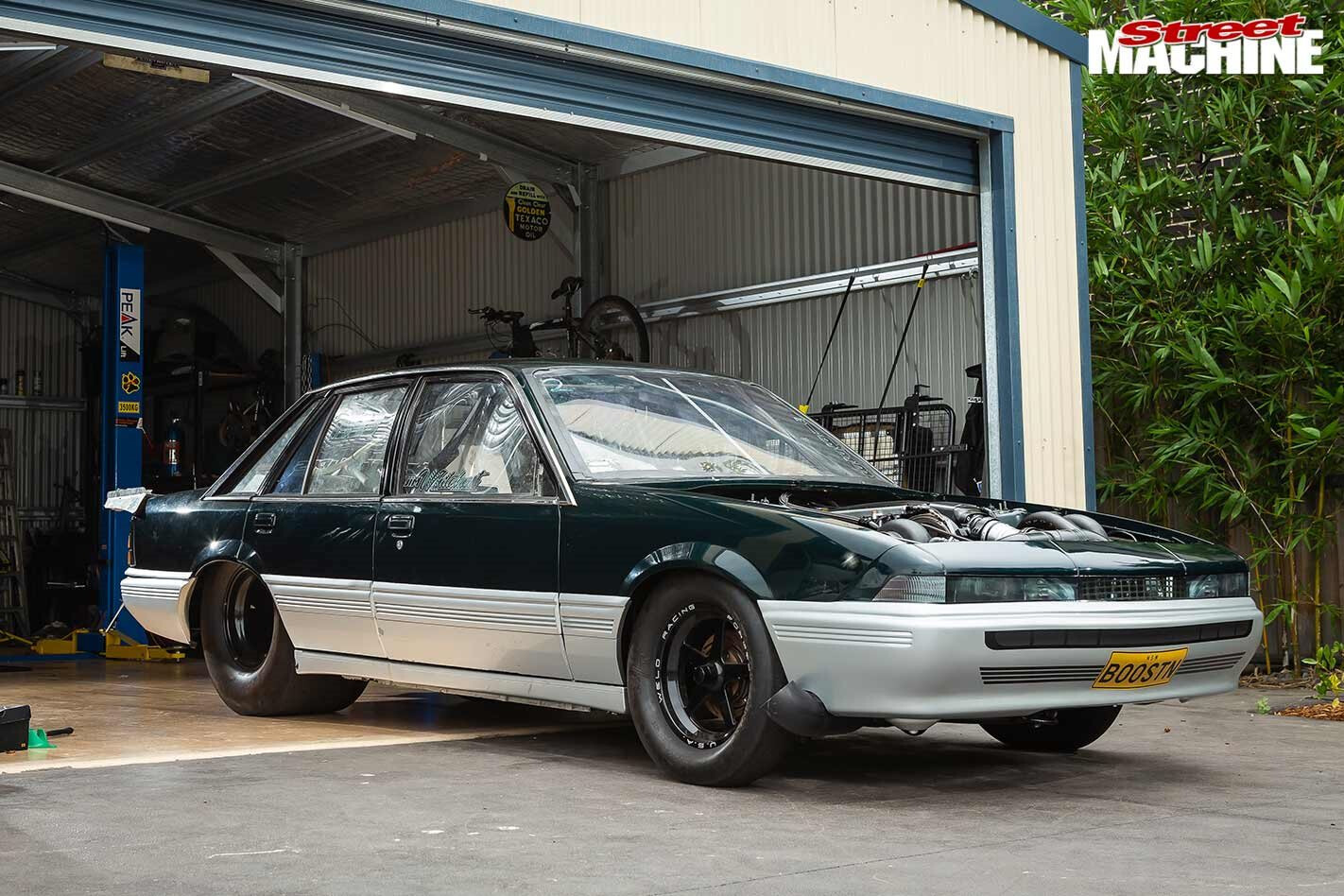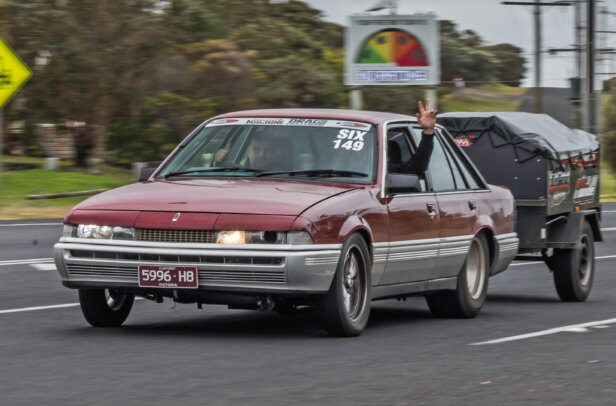ANOTHER big hitter ready to join the growing ranks of six-second cars is Jim Whitehurst’s VL Calais. Many would recognise the car as the first VL to run a seven-second pass with an RB engine, with a best of 7.70. But since then Jim has struggled with the reliability of the factory Nissan engine blocks, so he has ditched the unreliable combo and is now destined for six-second glory thanks to a new twin-turbo, 427ci LS package from Castle Hill Performance, capable of pumping out in excess of 2000hp.
This article on Jim’s VL Calais was first published in the March 2019 issue of Street Machine
“I’ve owned this car for around 20 years,” Jim says. “It was the first RB-powered VL into the sevens, but even with help from workshops you cannot compete with workshop-owned cars, so the transition from the RB is a no-brainer. I’m looking for something consistent; I just want to get out and do some racing and it’s hard to do that with a stock-block RB engine. They are on the limit all the time without a billet block, so for years my car has done very little racing.”
Castle Hill Performance’s Dale Heiler is no stranger to big-horsepower LS combinations, having already run into the bottom 6.70s with one of his cars and reportedly been given the nod to tune two new Pro Stock deals. This will have his stable tuning the three quickest LS cars Down Under.
“Dale seems to know a good tune for these combinations and can keep them alive,” Jim says.
The mega LS that Castle Hill built for Jim is loaded with all the best bits: LSX block, GRP alloy conrods, Ross pistons that yield a static compression ratio of 10:1, and a Dart counterweighted crank.
The block is topped with a set of Brodix BR7 heads with Crower 1.7:1 shaft-mounted rocker arms, Crower lifters, Manton pushrods, and a five-stage dry sump with a Stock Car Products pan.
The LS is a good fit in the VL engine bay and the tubular front end has made a lot of the fabrication work easier due to the better access it allows.
On the hot side, the boys have gone with two-inch primaries off the head, dumping into a five-inch exhaust with a pair of Tial 60mm wastegates and two Garrett GTX 47/88 turbochargers.
As the engine runs on alcohol, there is no intercooler, and also no blow-off valve. The boost pipes run straight from the compressor housings to a CNC-machined billet Plazmaman intake manifold loaded with 16 Siemens 2400cc injectors. It’s controlled by a Haltech Elite 2500 ECU with eight EGT probes, wheel speed sensor, all the usual engine-monitoring sensors and dual wideband exhaust sampling.
Backing up the powerhouse is a Reid-case Powerglide built by Al’s Race Glides, while the four-link rear end was built many years back by Mick’s Metalcraft.
While the car does have a tubular front end, it retains the stock chassis rails and is pretty much a fully specced VL body, which makes it radial-legal. A 15-litre front-mounted fuel cell has been also fabricated by Castle Hill, and as the motor does not run water, it keeps the plumbing pretty simple up front.
It’s a sensory overload! A Haltech Elite 2500 with sensors up the hoo-ha monitor everything from exhaust gas temps to wheel speed, collecting data that will assist Dale Heiler in dialling it into the 6sec range
As the car has been back-halved, it can squeeze a pretty hefty 32×14 rear slick under the guards, and while it will make some shakedown passes in this configuration, Dale is confident they will then make the transition to radial tyres.
Weight-wise, the car is within 100lb of the RB engine configuration, and when you consider that with around 35psi of boost the new mill will make a solid 2000hp, we are looking at real six-second capabilities.
Castle Hill Performance built Jim a new twin-turbo LSX combo to replace the old RB. The 2000hp monster nestles nicely in the VL’s engine bay. The car’s tubular front end made the fab work a little easier
“The plan is to start on low boost, somewhere around 18psi,” Jim says cautiously. “I don’t want to speak too soon, but this combination is lighter and on a bigger tyre; no matter how I add it up, it all points to sixes. To date, the car has never gone faster than a 7.70, as no matter what combination the car has run, the block always failed.
“Dale has been great with this deal – always available,” he continues. “But while he built the motor and did a lot of the hot and cold side, I’ve done most of the fit-up work, including engine-plating the motor in the car.
“The car is ready to go, and we are entered for the Lights Out event – that’s the sort of racing I want to be doing.
“A good result would be somewhere close to a six or a low seven-second pass on 18psi, and Dale reckons we need to pull the motor for inspection every 16 passes. Hell, I have not done that in 10 years with the RB!”




Comments